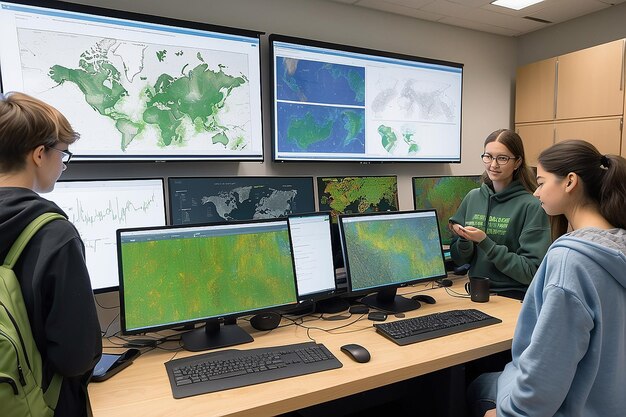Emergency Preparedness: National Guidelines for Natural Disasters 2025

Emergency preparedness in the U.S. for 2025 involves updated national guidelines focused on proactive measures, community resilience, and technological integration to mitigate the impact of natural disasters, thereby safeguarding lives and infrastructure across the nation.
As we approach 2025, the importance of emergency preparedness in the face of increasingly frequent and intense natural disasters cannot be overstated. This article delves into the updated national guidelines designed to equip individuals, communities, and organizations across the United States with the knowledge and resources necessary to navigate these challenges effectively.
Understanding the Evolving Landscape of Natural Disasters
Natural disasters are becoming more frequent and intense due to climate change and other environmental factors. Understanding these changes is crucial for effective emergency preparedness. By recognizing potential risks, communities can better allocate resources and implement strategies to minimize damage.
The Impact of Climate Change
Climate change significantly influences the frequency and severity of natural disasters. Rising temperatures, changing precipitation patterns, and sea-level rise contribute to more intense hurricanes, floods, wildfires, and droughts.
Analyzing Recent Disaster Trends in the US
Recent years have seen a surge in billion-dollar disasters across the United States. From devastating hurricanes along the Gulf Coast to catastrophic wildfires in the West, these events underscore the urgent need for enhanced preparedness measures.
- Increased frequency of extreme weather events
- Higher economic losses from natural disasters
- Disproportionate impact on vulnerable communities
Understanding these trends is a crucial first step in developing effective emergency preparedness strategies. By studying past events, communities can identify vulnerabilities and implement targeted measures to reduce risk.
In conclusion, recognizing the evolving landscape of natural disasters is essential for developing effective emergency preparedness strategies. Staying informed about climate change and recent disaster trends enables communities to better protect themselves and mitigate the impact of these events.
Key Updates in the 2025 National Guidelines
The 2025 national guidelines for emergency preparedness reflect lessons learned from recent disasters and incorporate advancements in technology and best practices. These updates aim to improve coordination, communication, and resource allocation at all levels of government and within communities.
Focus on Community Resilience
A key theme in the 2025 guidelines is the emphasis on building community resilience. This involves empowering local communities to take ownership of their preparedness efforts and fostering collaboration among residents, businesses, and organizations.
Integration of Technology
Technology plays a critical role in modern emergency preparedness. The updated guidelines promote the use of digital tools for early warning systems, communication networks, and data analysis to improve response efforts.
- Enhanced early warning systems
- Improved communication networks
- Data-driven decision-making
By integrating these technological advancements, emergency managers can make more informed decisions and respond more effectively to disasters.

These key updates in the 2025 national guidelines represent a significant step forward in improving emergency preparedness across the United States. By focusing on community resilience and integrating technology, these guidelines aim to create a more prepared and resilient nation.
Individual Preparedness: Your Role in the 2025 Plan
While national guidelines provide a framework for emergency preparedness, individual actions are equally important. Every person has a role to play in ensuring their safety and the safety of their community. Being prepared involves creating an emergency plan, building a disaster supply kit, and staying informed.
Creating a Family Emergency Plan
A family emergency plan outlines what to do in case of a disaster. It should include evacuation routes, meeting places, and communication strategies.
Building a Disaster Supply Kit
A disaster supply kit contains essential items needed to survive for several days without outside assistance. These items include water, food, medication, and a first-aid kit.
- Water: One gallon per person per day
- Food: Non-perishable items for at least three days
- First-aid kit: Including necessary medications
Taking these simple steps can significantly improve your ability to cope with a disaster and protect yourself and your loved ones.
In conclusion, individual preparedness is a critical component of the 2025 national guidelines for emergency preparedness. By creating an emergency plan, building a disaster supply kit, and staying informed, individuals can play a vital role in protecting themselves and their communities.
Community-Level Initiatives and Programs
Effective emergency preparedness requires collective action at the community level. Various initiatives and programs are available to help communities prepare for and respond to natural disasters. These include community emergency response teams (CERT), neighborhood watch groups, and local volunteer organizations.
Community Emergency Response Teams (CERT)
CERT programs train volunteers in basic disaster response skills, such as fire safety, search and rescue, and first aid. CERT teams play a crucial role in assisting first responders during emergencies.
Neighborhood Watch Groups
Neighborhood watch groups can help communities prepare for disasters by organizing preparedness workshops, conducting drills, and disseminating information.
These initiatives and programs demonstrate the power of collective action in enhancing community resilience. By working together, communities can better protect themselves and support one another during times of crisis.

In summary, community-level initiatives and programs are essential for building resilience and enhancing emergency preparedness. By supporting and participating in these efforts, communities can strengthen their ability to respond effectively to natural disasters.
Leveraging Technology for Enhanced Preparedness
Technology plays a crucial role in modern emergency preparedness. From early warning systems to communication networks, technology can help individuals and communities better prepare for, respond to, and recover from natural disasters. The use of mobile apps, social media, and data analytics is transforming the landscape of emergency management.
Mobile Apps for Emergency Alerts
Mobile apps can provide real-time alerts and information about impending disasters, evacuation routes, and shelter locations.
Social Media as a Communication Tool
Social media platforms can be used to disseminate information, coordinate response efforts, and connect with affected individuals during emergencies.
- Real-time alerts and warnings
- Coordination of response efforts
- Connection with affected individuals
Leveraging these technological advancements can significantly enhance preparedness efforts and improve outcomes during natural disasters.
In conclusion, technology is a powerful tool for enhancing emergency preparedness. By leveraging mobile apps, social media, and data analytics, individuals and communities can better protect themselves and respond effectively to natural disasters.
Future Directions and Long-Term Planning
Looking ahead, emergency preparedness efforts must continue to evolve to address emerging challenges and threats. This involves investing in research and development, promoting innovative solutions, and fostering collaboration across sectors. Long-term planning is essential for building a more resilient and sustainable future.
Investing in Research and Development
Continued investment in research and development is needed to improve our understanding of natural disasters and develop new technologies and strategies for mitigation and response.
Promoting Innovative Solutions
Encouraging innovation and creativity can lead to the development of new and effective solutions for emergency preparedness.
By embracing these future directions and engaging in long-term planning, we can create a more resilient and sustainable future for all.
| Key Aspect | Brief Description |
|---|---|
| ⚠️ Updated Guidelines | Focus on proactive measures and community resilience for 2025. |
| 🏠 Individual Plans | Creating family plans and disaster supply kits is critical. |
| 🤝 Community Action | CERT teams and neighborhood groups enhance preparedness. |
| 📱 Tech Integration | Leveraging apps and social media for alerts and coordination. |
Frequently Asked Questions
▼
The primary goals include enhancing community resilience, improving resource allocation, and integrating technology for more effective disaster response preparedness and mitigation.
▼
Start by identifying potential hazards in your area, establishing meeting points, creating communication strategies and practicing the plan regularly with your family.
▼
Your kit should contain water, non-perishable food, a first-aid kit, necessary medications, a flashlight, a radio, extra batteries, and personal hygiene items.
▼
Join a Community Emergency Response Team (CERT), participate in neighborhood watch groups, and volunteer with local organizations involved in disaster preparedness and response.
▼
You can visit the websites of FEMA, the American Red Cross, and your local emergency management agency for resources, guidelines, and training opportunities.
Conclusion
The updated national guidelines for emergency preparedness in 2025 underscore the importance of proactive measures, community resilience, and technological integration. By understanding these guidelines, taking individual responsibility, and engaging in community efforts, we can collectively enhance our ability to navigate and mitigate the impact of natural disasters, ensuring a safer and more resilient future for the United States.





